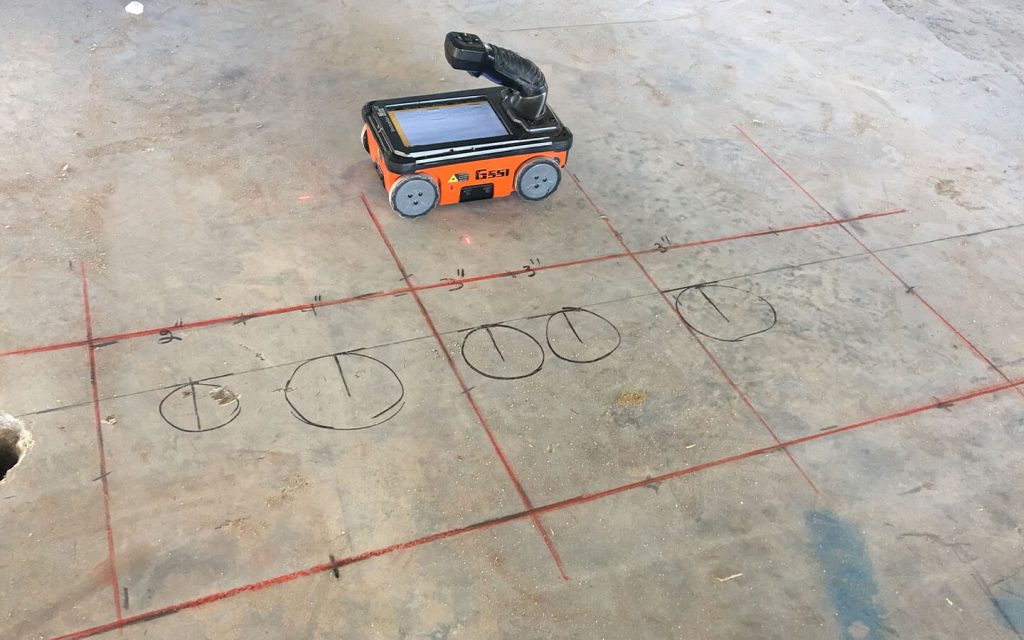Efficient Concrete Scanning Techniques for Construction Jobs
Efficient Concrete Scanning Techniques for Construction Jobs
Blog Article
Beyond the Surface Area: Leveraging Advanced Concrete Scanning Techniques for Unmatched Accuracy and Insight
Advanced concrete scanning techniques have actually arised as important devices in this pursuit, using a glance underneath the surface to reveal a globe of essential understandings. By harnessing innovative technologies, specialists can reveal anomalies, evaluate the problem of concrete frameworks, and make informed choices that form the program of jobs.
Relevance of Advanced Concrete Scanning
The relevance of utilizing sophisticated concrete scanning strategies hinges on the unequaled accuracy they offer for spotting sub-surface anomalies and ensuring structural stability. By utilizing innovative modern technologies such as ground-penetrating radar (GPR), electro-magnetic induction, and progressed sonar imaging, building experts can dig underneath the surface area of concrete frameworks with a degree of precision that far surpasses traditional evaluation techniques. Concrete Scanning. These methods allow the identification of covert dangers like rebar corrosion, voids, conduits, or post-tension cables that could endanger the stability and safety and security of a structure in time
In addition, progressed concrete scanning offers vital insights into the total problem of a concrete aspect without the need for intrusive actions, lessening the danger of causing damages throughout the assessment process. The ability to determine the precise location and deepness of possible problems enables for targeted repair services and maintenance, ultimately lengthening the life expectancy of the structure and maximizing its performance. Fundamentally, the significance of advanced concrete scanning can not be overstated in the world of building and construction and facilities maintenance, where accuracy and dependability are vital.
Sorts Of Cutting-Edge Technologies

Anomalies and Flaw Detection

In addition to GPR, concrete scanning strategies like thermography and impact-echo screening are also effective in detecting issues and anomalies. Thermography utilizes infrared innovation to determine variations in surface temperature, suggesting possible areas of problem such as delamination or wetness ingress. On the other hand, impact-echo screening entails analyzing acoustic reactions to find spaces, splits, and other issues within the concrete. By leveraging these innovative methods, specialists can proactively resolve architectural concerns, making sure the long life and safety of concrete structures.
Assessing Concrete Problem
Just how can designers accurately evaluate the condition of concrete frameworks to ensure their durability and safety and security? Numerous innovative concrete scanning techniques are used for this function. Ground-penetrating radar (GPR) is generally utilized to analyze the inner framework of concrete, see page discovering voids, splits, and other abnormalities that might jeopardize its strength.
Integrating non-destructive screening approaches with aesthetic examinations permits for a thorough evaluation of concrete condition, enabling designers to determine prospective concerns early on and carry out prompt upkeep or repair services. By leveraging these innovative techniques, engineers can make certain the lasting toughness and safety of concrete frameworks.
Enhancing Decision-Making Processes
In the realm of infrastructure administration, maximizing decision-making procedures is critical for guaranteeing the efficient maintenance and long life of concrete structures. Boosted decision-making processes in concrete management involve utilizing sophisticated scanning techniques to collect thorough data on the problem of structures. By leveraging innovations such as ground-penetrating radar and 3D imaging, stakeholders can make enlightened decisions relating to substitute, reinforcement, or fixing approaches.
These advanced scanning strategies supply very useful insights right into the interior composition of concrete, recognizing prospective concerns such as spaces, cracks, or rust that may not be visible on the surface. This level of detailed info permits aggressive maintenance planning, reducing the risk of structural failings and raising the total life-span of concrete structures.
Furthermore, by integrating digital documentation and analysis tools right into the decision-making procedure, stakeholders can track the development of concrete problems with time, enabling predictive upkeep techniques and enhancing source allocation. Eventually, the combination of sophisticated concrete scanning strategies enhances decision-making procedures by giving unmatched precision, insight, and efficiency in facilities management.
Conclusion
In final thought, progressed concrete scanning techniques provide unmatched accuracy and insight in discovering abnormalities, problems, and examining the condition of concrete frameworks. By leveraging sophisticated innovations, decision-making processes can be boosted, leading to more educated and effective options for keeping and repairing concrete framework. These techniques play a vital duty in guaranteeing the security and longevity of concrete frameworks, making them an essential tool in the field of construction and engineering.
Furthermore, progressed concrete scanning offers invaluable insights right into the overall problem of a concrete aspect without the demand for intrusive actions, minimizing the threat of triggering damage throughout the evaluation process - Concrete Scanning. One more cutting-edge modern technology is 3D X-ray scanning, which provides in-depth images of the interior framework of concrete, using beneficial details without the need for harmful testing. Furthermore, Concrete Cover Meters Website are utilized to measure the thickness of concrete cover over reinforcement bars properly. Enhanced decision-making procedures in concrete monitoring involve using sophisticated published here scanning strategies to collect in-depth information on the condition of frameworks.In conclusion, advanced concrete scanning strategies supply unmatched accuracy and understanding in discovering abnormalities, defects, and assessing the problem of concrete frameworks
Report this page